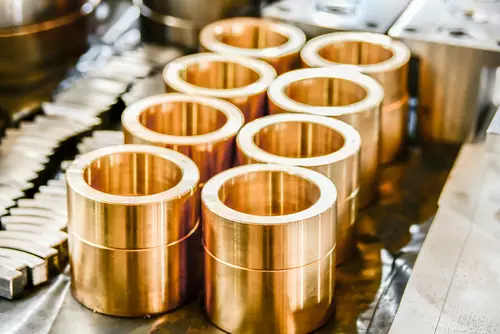
How Oil Impregnated Bronze Bushings Improve Performance
Bronze bushings are widely used in many applications due to their unique combination of strength, durability, and machinability. Oil-impregnated bronze bushings are a cost-effective and low-maintenance alternative to traditional roller, ball, and needle bearings. There are many benefits when specifying bronze bushings for your application. Bronze Bushings are long-lasting and have excellent resistance to friction and wear.
Bronze Bushings are an excellent choice for use in high temperatures, keeping their shape with no deformation. They are also hard and durable, making them less likely to break or change shape under pressure, in addition to being corrosion resistant.
Typical applications for bronze bushings include:
- Sleeve bearing
- Electric motors
- Engines
- Bicycles
- Fishing reels
- Hydraulic cylinders
- Stage lighting
- Medical and dental tools
- Printer rollers
- Fitness equipment
- Surveillance systems
- Kitchen appliances
- Escalators
- ATMs
In this article, we will explore the self-lubricating features of oil-impregnated bronze bushings, as well as the advantages they offer for performance improvement. We will discuss the best practices for installation and maintenance and how bronze bushings help businesses achieve greater sustainability in their operations.
Advantage: High-Quality Bronze Bushings
- Bronze bushings exhibit excellent wear resistance, which extends the lifespan of both the bushing and the mating components. This property is crucial in reducing maintenance needs and downtime.
- High-quality bronze is inherently resistant to corrosion, making these bushings suitable for use in environments where they may be exposed to moisture or corrosive substances.
- Bronze bushings maintain a low coefficient of friction. This reduces the energy loss due to friction and enhances the overall efficiency of the machinery.
- Bronze has good thermal conductivity. This property helps in dissipating heat from the bushing, preventing overheating and potential damage to the system.
- Bronze bushings work well with a variety of lubricants, which is essential for reducing friction and wear in applications where lubrication is necessary.
- High-quality bronze bushings maintain their structural integrity even under high load and stress conditions, ensuring reliable performance and safety.
- These bushings are versatile and can be used in a wide range of industrial applications, from heavy machinery to precision instruments.
- Bronze bushings can be easily customized in terms of size and shape to fit specific applications, providing flexibility in design and engineering solutions.
- Besides corrosion resistance, they also resist damage from various environmental factors such as dust and contaminants.
- Considering their durability and low maintenance requirements, bronze bushings offer a cost-effective solution over the long term.
Lubrication Mechanisms of Oil Impregnated Bronze Bushings
Oil-impregnated bronze bushings are a type of bearing that relies on oil to provide lubrication between the two metal surfaces. The oil is infused into the pores of the bronze material, creating a self-lubricating surface that reduces friction and wear. There are three main lubrication mechanisms that oil-impregnated bronze bushings use to improve performance: capillary action, boundary lubrication, and hydrodynamic lubrication.
Capillary action occurs when the oil in the bronze bushing is absorbed by the microscopic pores in the metal. This creates a continuous lubrication film between the two surfaces, which reduces friction and wear. Capillary action is particularly effective in low-load, high-speed applications where the bearing is constantly in motion.
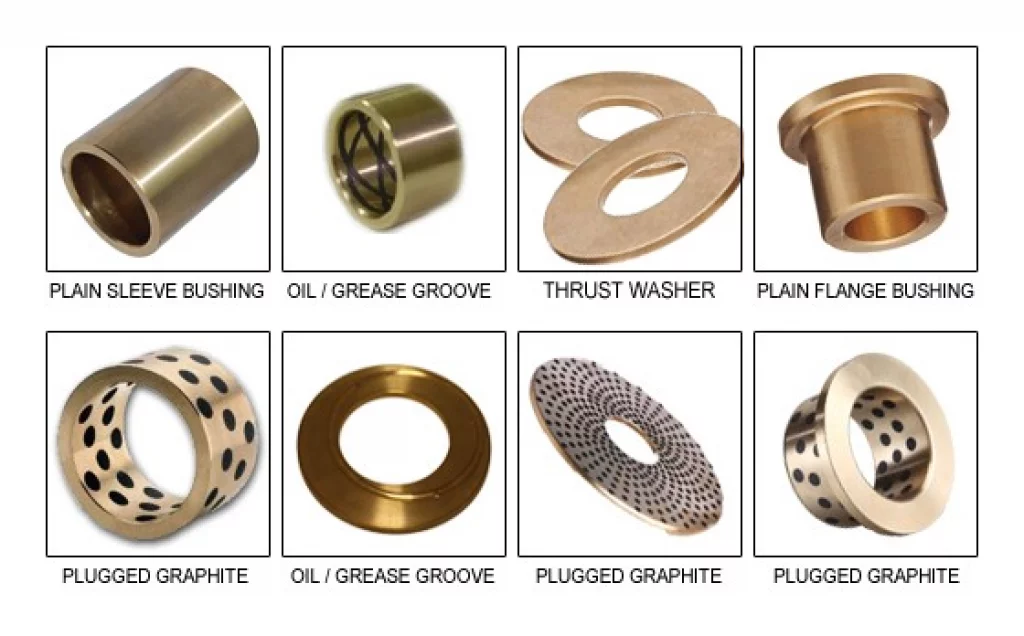
Boundary Lubrication
Boundary lubrication occurs when the load on the bearing is too high for the capillary action to provide sufficient lubrication. In this case, a thin layer of oil is deposited on the metal surface, forming a boundary between the two surfaces. This boundary layer reduces friction and wear and protects the metal from damage. Boundary lubrication is effective in moderate to high-load applications where there is some motion between the two surfaces.
Hydrodynamic Lubrication
Hydrodynamic lubrication occurs when the bearing is under heavy load and the oil is forced into a wedge-shaped film between the two surfaces. This creates a hydrodynamic cushion that separates the surfaces and reduces friction and wear. Hydrodynamic lubrication is effective in high-load, low-speed applications where there is a significant amount of motion between the two surfaces.
Oil-impregnated bronze bushings are specified instead of ball bearings because they offer several advantages. 1) They require minimal maintenance, which helps to reduce operating costs. 2) They are exceptionally durable and can withstand heavy loads, shock, and vibration, which helps to extend the life of the equipment. 3) They are highly resistant to extreme temperatures and harsh environments, making them suitable for use in a wide variety of applications.
The lubrication mechanisms of capillary action, boundary lubrication, and hydrodynamic lubrication ensure that oil-impregnated bronze bushings provide optimal performance.
Lower Maintenance and Operating Costs
Because oil-impregnated bronze bushings are self-lubricating, they require minimal maintenance. Unlike traditional lubrication methods, such as grease or oil, there is no need to constantly monitor and replenish the lubricant. This results in lower maintenance costs and reduces the amount of time that the equipment is out of service for repairs. Additionally, because the bushings are durable and have a long lifespan, they reduce the need for replacement parts, further lowering operating costs.
Installation Techniques
When installing oil impregnated bronze bushings, it is important to ensure that the mating surfaces are clean and free of debris, rust, or burrs. This will help to ensure proper alignment and prevent premature wear of the bushings. The bushings should be pressed into place using a hydraulic press or other appropriate tool. It is important to ensure that the bushings are pressed straight and evenly to avoid distortion or damage to the bushings. It is also important to select the appropriate clearance between the bushing and the mating surface. The clearance should be appropriate for the specific application and operating conditions. Too much clearance can result in excessive wear, while too little clearance can result in the binding or seizing of the bushing.
Maintenance and Lubrication
Oil-impregnated bronze bushings are self-lubricating, which reduces the need for frequent maintenance. However, it is important to monitor the bushings regularly to ensure that they are performing optimally. The bushings should be inspected for wear or damage, and any debris or contaminants should be removed. It is also important to ensure that the bushings are properly lubricated. While oil-impregnated bronze bushings do not require external lubrication, some applications may require additional lubrication for optimal performance. In these cases, it is important to select the appropriate lubricant and follow the manufacturer’s recommendations for lubrication frequency and application. If the bushings show signs of wear or damage, they should be replaced as soon as possible to prevent further damage to the equipment. Unlike brass bushings, which often require frequent external lubrication, oil-impregnated bushings offer internal lubrication and lower upkeep. Regular maintenance and inspection can help to identify potential issues before they become major problems, reducing downtime and maintenance costs.
Difference between Cast Bronze Bushings and Oil Impregnated Bronze Bushings
When evaluating bronze bushings, it’s important to distinguish between two major types: cast bronze bushings and oil-impregnated bronze bushings. Each type has unique characteristics and applications, making them suitable for different engineering needs.
Cast Bronze Bushings
Cast bronze bushings are fabricated through a traditional casting process where molten bronze alloy, typically a blend of copper, tin, and additional elements like zinc or lead, is poured into molds. This method enables the production of bushings in a variety of sizes and complex shapes, tailored to specific engineering needs. The resulting bushings are known for their strength and resistance to wear, making them suitable for high-load and high-speed applications. Commonly used in heavy-duty machinery such as construction and mining equipment, these bushings require regular lubrication to maintain their efficiency and longevity. Their robust nature makes them a reliable choice for demanding mechanical environments where durability is key.
Oil-Impregnated Bronze Bushings
Oil-impregnated bronze bushings, on the other hand, are manufactured using a distinct powder metallurgy technique. This process involves compressing and heating bronze powder to form a porous structure, which is then saturated with lubricating oil under vacuum. The oil impregnation provides a self-lubricating feature, releasing lubricant gradually during operation and thereby reducing the need for frequent maintenance. These bushings are particularly advantageous in applications where consistent manual lubrication is challenging or impractical, such as in small motors, household appliances, and various electrical equipment. The self-lubricating nature of these bushings makes them ideal for low-load, low-speed applications, offering a convenient and low-maintenance solution in scenarios where accessibility and simplicity are priorities.
Key differences:
- Cast Bronze Bushings are produced using a traditional casting process where molten metal is shaped in molds. This contrasts with Oil-Impregnated Bronze Bushings, which are created through powder metallurgy, resulting in a porous structure that is then infused with lubricating oil.
- A major difference lies in the lubrication approach. Cast Bronze Bushings require external lubrication for smooth operation, whereas Oil-Impregnated Bronze Bushings are self-lubricating, thanks to the oil embedded within their structure.
- Cast Bronze Bushings are typically employed in scenarios demanding robustness under high load and speed, such as in industrial machinery. In contrast, Oil-Impregnated Bronze Bushings are more suited for applications where maintenance is less frequent, and operating conditions are of lower load and speed, like in small electrical devices.
- The maintenance profile of these bushings also differs. Cast Bronze Bushings necessitate regular lubrication maintenance, while Oil-Impregnated Bronze Bushings offer a low-maintenance solution due to their inherent self-lubricating properties.
Conclusion
In conclusion, oil-impregnated bronze bushings are an excellent choice for machinery and equipment due to their superior performance and durability. The unique lubrication mechanisms of capillary action, boundary lubrication, and hydrodynamic lubrication provide reduced friction and wear, increased durability and longevity, lower maintenance and operating costs, and enhanced shock and vibration resistance. Reducing downtime for maintenance and repairs, improving equipment efficiency and productivity, and lowering costs, oil-impregnated bronze bushings are a sustainable solution for businesses looking to improve their operations.
Contact us to buy Bronze Bushings.
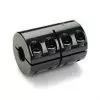
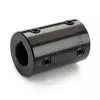
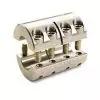
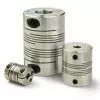
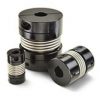
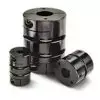
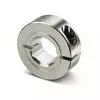
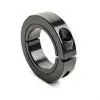
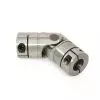
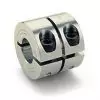 Short Rigid Couplings
Short Rigid Couplings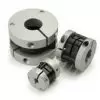 Controlflex Couplings
Controlflex Couplings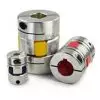 Jaw Couplings
Jaw Couplings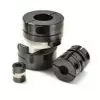 Oldham Couplings
Oldham Couplings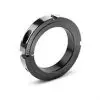 Bearing Locknuts – TCN
Bearing Locknuts – TCN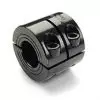 Double Wide Shaft Collars
Double Wide Shaft Collars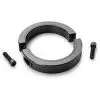 Heavy Duty Shaft Collars
Heavy Duty Shaft Collars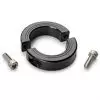 International Series Shaft Collars
International Series Shaft Collars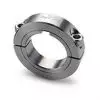 Keyed Shaft Collars
Keyed Shaft Collars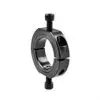 Mountable Shaft Collars
Mountable Shaft Collars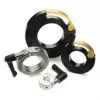 Quick Clamping Shaft Collars
Quick Clamping Shaft Collars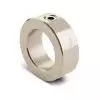 Set Screw Shaft Collars
Set Screw Shaft Collars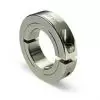 Thin Line Shaft Collars
Thin Line Shaft Collars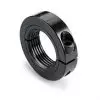 Threaded Shaft Collars – Pacific International Bearing Products
Threaded Shaft Collars – Pacific International Bearing Products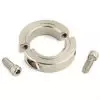 Two-Piece Shaft Collars
Two-Piece Shaft Collars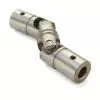 Friction Bearing Universal Joints
Friction Bearing Universal Joints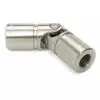 Needle Bearing Universal Joints
Needle Bearing Universal Joints